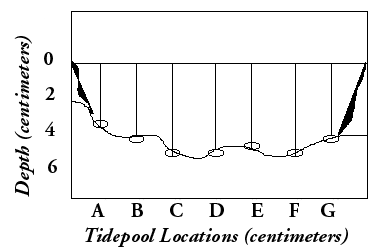
|
MAPPING THE DEPTH & POPULATION OF A TIDEPOOL |
|
KEY CONCEPTS |
|
|
MATERIALS
|
|
||||||||
|
PROCEDURE |
||||||||||
|
||||||||||
|
CROSS-CURRICULAR IDEAS
|
||||||||||
|
||||||||||
|
SOURCE |
 |
Example of one depth transect across the length of a tidepool. Stations are separated by 20 centimeters and labelled "A" through "G." |